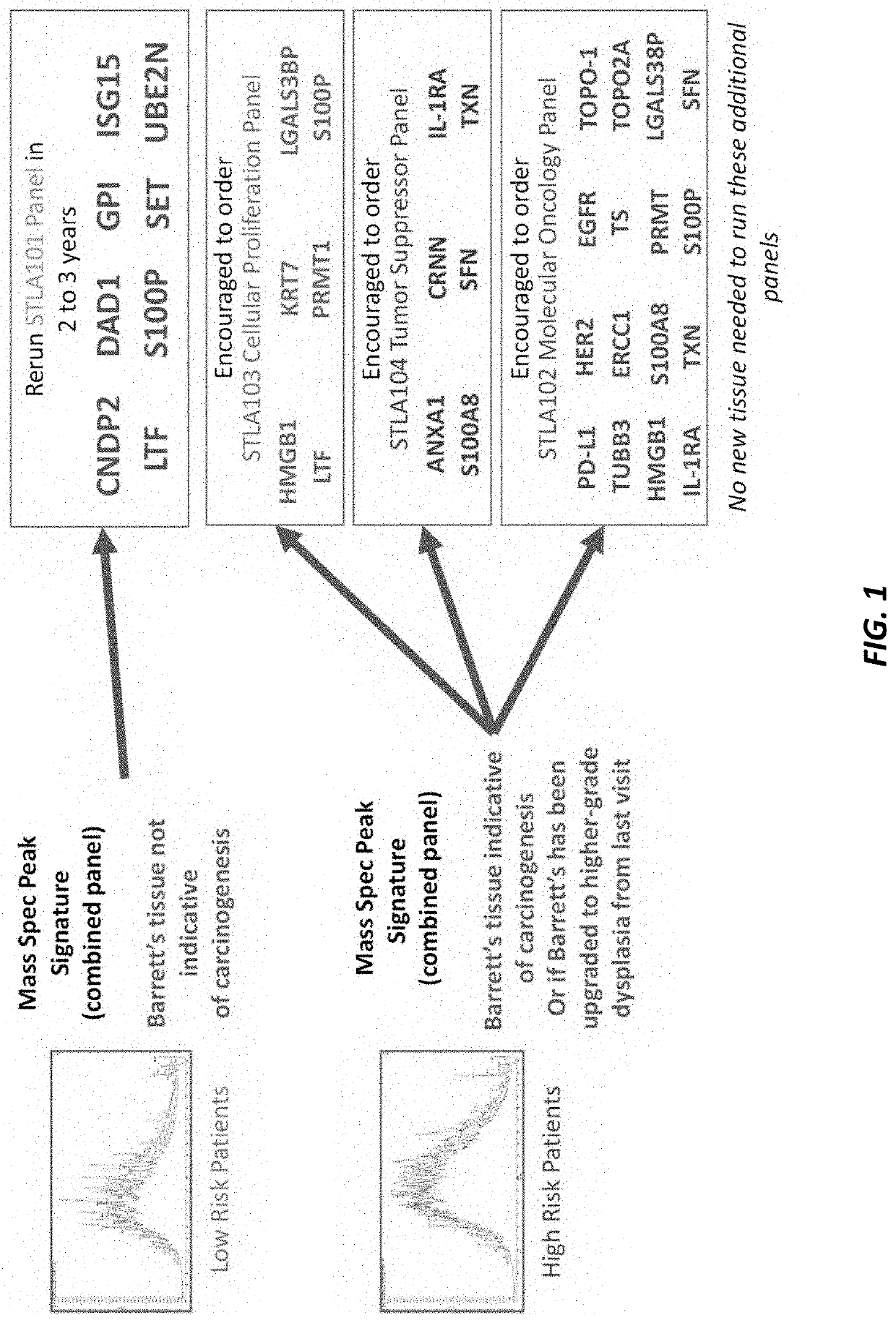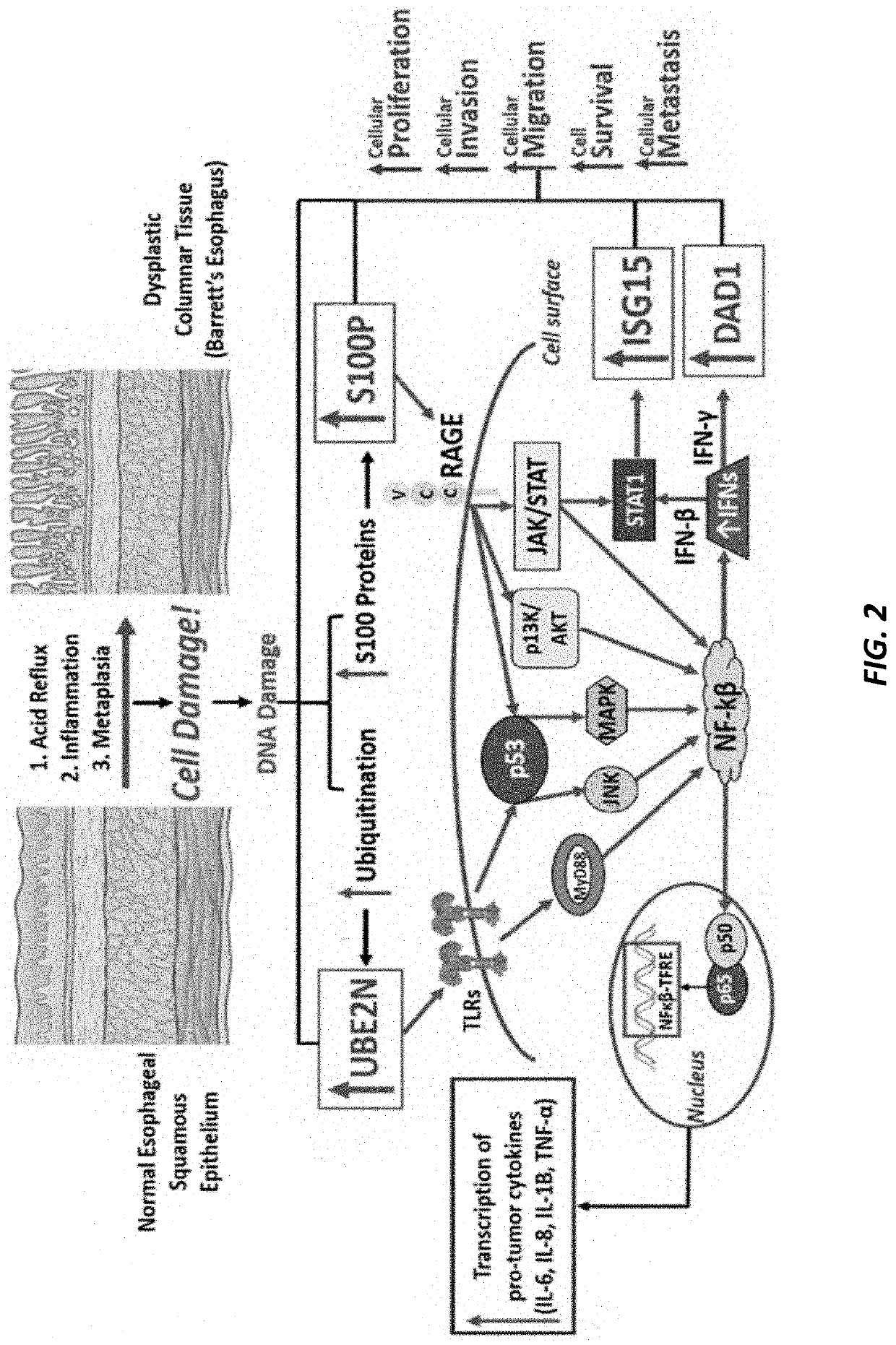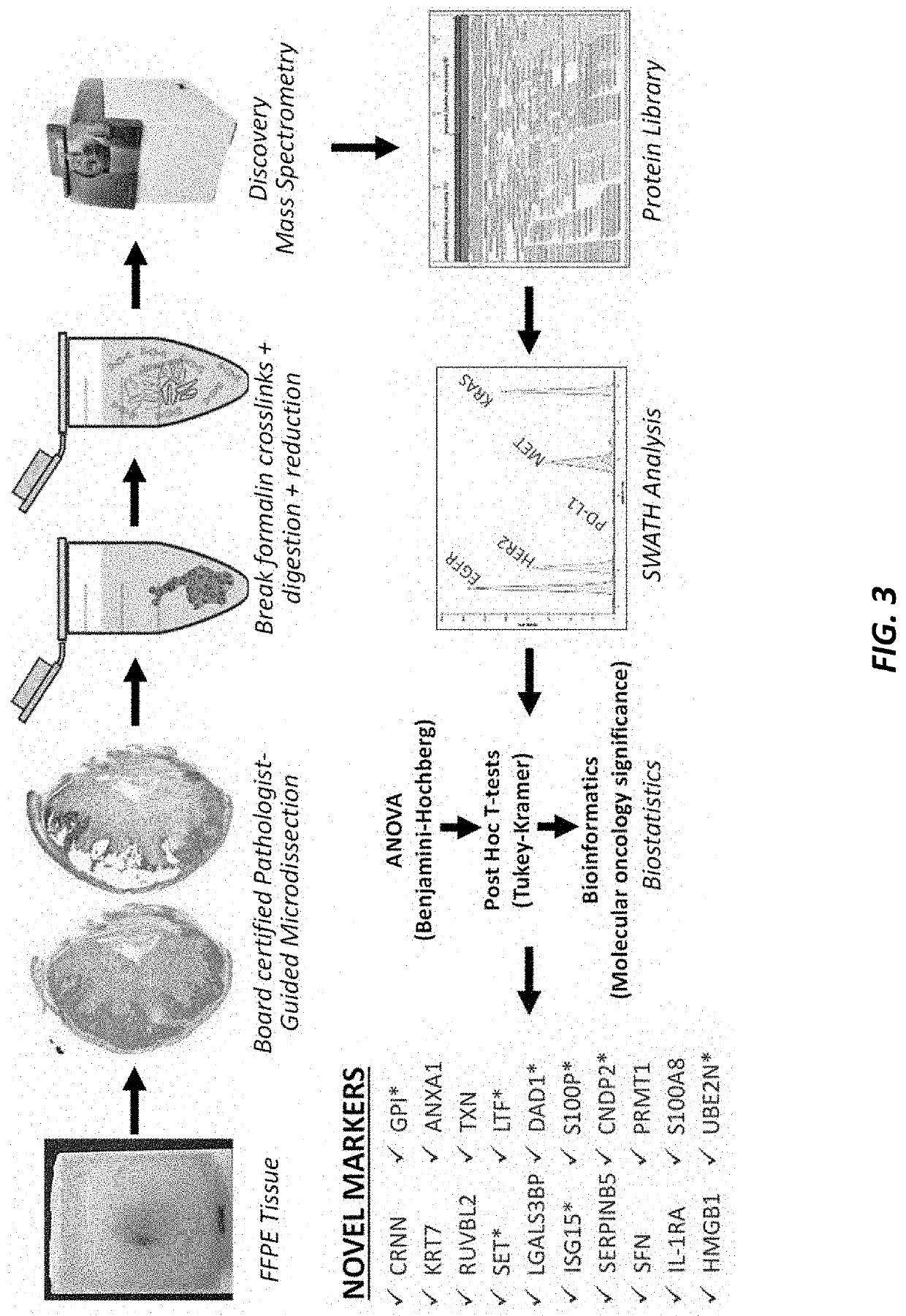Systems and methods for barrett's esophagus pathogenesis and esophageal adenocarcinoma progression revealing markers
a technology of esophageal adenocarcinoma and barrett's esophagus, which is applied in the field of system and method of barrett's esophagus pathogenesis and esophageal adenocarcinoma progression revealing markers, can solve the problems of increased risk of not running properly or breaking expensive machinery, increased risk of esophageal adenocarcinoma, and increased risk of esophageal adenocarcinom
- Summary
- Abstract
- Description
- Claims
- Application Information
AI Technical Summary
Benefits of technology
Problems solved by technology
Method used
Image
Examples
example 1
ation of Novel Markers for Barrett's Esophagus Pathogenesis and Esophageal Adenocarcinoma Progression
[0171]Large-scale mass spectrometric analyses were used to detect overexpression and downregulation patterns that contribute to the aggressiveness of esophageal adenocarcinoma (EAC). Formalin-fixed paraffin-embedded (FFPE) tissue samples, obtained from esophagectomy surgery before any chemotherapy or radiation had been administered, were used in analyzing EAC tissue, Barrett's esophagus (BE) tissue from subjects that progressed to EAC, and normal esophageal squamous epithelium from 50 patients. Our platform consisted of pathologist-guided microdissection, a Liquid Tissue® process turning FFPE tissue into a digested lysate, discovery mass spectrometry (TripleTOF 6600), and conservative biostatistics. Pathogenic processes that correlate with aggressiveness of this disease as well as EAC's proclivity to resist chemotherapeutic agents were identified. Twenty relevant proteomic events in ...
example 2
asibility and Assay Development for Targeted Mass Spectrometry
[0280]Target peptides for UBE2N, DAD1, ISG15, CNDP2, GPI, SET, LTF, and S100P were designed, generated, and evaluated for target feasibility and to develop assays for targeted mass spectrometry.
UBE2N
[0281]UBE2N (UniProt P61088) target peptides were evaluated for target feasibility for targeted mass spectrometry. The following exclusion criteria were used for in silico mapping: no methionine (M), no cysteine (C), and no arginine (R) or lysine (K) followed by a proline (P) (i.e., no RP or KP). The following inclusion criteria were used for in silico mapping: peptide sequence length between 5-25 amino acids, and fully tryptic sequences only. Based on these criteria, the peptides in Table 7, which are unique to UBE2N, were chosen.
TABLE 7Unique UBE2N peptides.UBE2NPost-TranslationalStartEndSequenceIsoformModificationsPositionPositionLLAEPVPGIK (SEQ ID NO: 1)1K24-ub, K24-sm, K24-sc 15 24AEPDESNAR (SEQ ID NO: 2)1 25 33YFHVVIAGPQ...
example 3
ion of Barrett's Esophagus Pathogenesis and Esophageal Adenocarcinoma Progression by Targeted Mass Spectrometry
Materials and Methods
1. Preparation of Reagents and Solutions.
[0313]1.1. Prepare 1 Liter of 85% Ethanol / Reagent Alcohol by adding 150 mL of distilled water to 850 mL of Ethanol / Reagent Alcohol.
[0314]1.2. Prepare 1 Liter of 70% Ethanol / Reagent Alcohol by adding 300 mL of distilled water to 700 mL of Ethanol / Reagent Alcohol.
[0315]1.3. Prepare an aliquot of Mayer's Hematoxylin Stain in a 50 mL tube, sufficient for the number of slides to be processed. Protect from light by wrapping the tube in foil or placing it inside a drawer or cabinet when not in use.
2. Slide and Process Preparation.
[0316]2.1. Refer to the table below for the appropriate container and volume of reagent for the number of slides being processed.
[0317]2.2. A minimum of 5 mL of reagent per slide is suggested. Fresh aliquots of solutions are used when processing additional batches of slides.
Number of SlidesCont...
PUM
| Property | Measurement | Unit |
|---|---|---|
| flow rate | aaaaa | aaaaa |
| flow rate | aaaaa | aaaaa |
| flow rate | aaaaa | aaaaa |
Abstract
Description
Claims
Application Information
 Login to View More
Login to View More - R&D
- Intellectual Property
- Life Sciences
- Materials
- Tech Scout
- Unparalleled Data Quality
- Higher Quality Content
- 60% Fewer Hallucinations
Browse by: Latest US Patents, China's latest patents, Technical Efficacy Thesaurus, Application Domain, Technology Topic, Popular Technical Reports.
© 2025 PatSnap. All rights reserved.Legal|Privacy policy|Modern Slavery Act Transparency Statement|Sitemap|About US| Contact US: help@patsnap.com



